Jeep Renegade Vs Compass: Which Jeep is Right for You?

While the upcoming flagship Jeeps will be the brand’s crown jewels, the entry-level Renegade and Compass are nothing to scoff at.
Jeep might be having a bit of a slump this year, but it by no means has dampened the spirits of the off-road brand. Despite sales taking a serious hit due to the global pandemic, Jeep announced two new vehicles for the 2022 model year. The Wagoneer and the Grand Cherokee L will be the brand’s flagship products and given the market’s obsession with SUVs, should be quite sucessful as well. But today we are looking at the opposite end of the Jeep spectrum.
Occupying the entry-level end of the Jeep showroom are two machines whose missions are similar: draw customers to the brand using a combination of reasonable pricing and a city-friendly footprint. Add in a good dose of Jeep-signature styling and off-road cred and it is easy to see why the brand is red hot.
That identifiable “Jeepness” takes its form in two very different ways in the Renegade and Compass, affording these two models the luxury of appealing to completely different customer sets whose tastes and styles may not be similar. It’s a smart play, one that is rewarding Jeep with many cubic acres of cash.
Get a Quote on a New Jeep Renegade or CompassWhich one is right for you? It’s our job to help you navigate the waters, so read on.
Jeep Renegade vs Compass
Powertrains
Renegade: Two engines are available in the 2021 Jeep Renegade, each with their own distinct personality. Standard on Sport and Latitude models is a 2.4L four-cylinder engine making 180 horsepower and 175 lb-ft of torque. Optional on Latitude but standard on the higher-spec Limited and Trailhawk trims is a turbocharged 1.3-liter mill. Fed a steady diet of 91 octane fuel, this small-displacement four-cylinder engine cranks out 177 horses. Compared to the 2020 model it now cranks out 210 lb-ft of torque, 10 more than last year’s engine. Both engines are only available with a nine-speed automatic. All trims except Upland, Trailhawk and Limited are available with both FWD and 4×4 while the three are available with 4×4 only.
Compass: Under the hood of all 2021 Jeep Compasses (Compi?) you’ll still find the same 2.4L inline-four found in the smaller Renegade with identical output. Two-wheel drive versions of this trucklet are only available with the six-speed automatic while the nine-speeder is reserved for the 4×4 trims only. Properly equipped, the Compass is rated to tow 2,000 pounds.
Bottom Line: Despite their size differences, similarly equipped Renegade and Compass models weigh roughly the same, meaning performance with the 2.4L engine should be comparable. Note that the turbocharged Renegade requires premium fuel, so consider that in your running cost calculations.
Off-Road Swagger
Renegade: Two-wheel-drive models have but a paltry 6.7 inches of ground clearance, placing itself squarely in a category with compact cars. The addition of 4×4 jacks this measure to a competitive 8.0 inches and the Trailhawk model, with its unique suspension bits, sits a robust 8.7 inches off the ground. Approach angles receive a similar boost once the Trailhawk treatment is applied, rising from around 20 degrees to 30.5 degrees. Departure angles don’t change a great deal depending on trim with measures of 29.7, 32.1, and 34.3 degrees being shown for the 4×2, 4×4, and Trailhawk models respectively. Note that Trailhawk comes standard with a knobby set of 17-inch Falken Wildpeak tires, skid plates, and 8.1 inches of wheel articulation. Both Jeep Active Drive and Active Drive Low 4×4 systems include the Jeep Selec-Terrain system, providing up to five modes (Auto, Snow, Sand and Mud modes, plus exclusive Rock mode on the Trailhawk model)
Compass: The Trailhawk trim gets its own Active Drive Low 4×4 system, a unit that endows the rig with a full-time 4×4 mode. While it does not have a center diff, Trailhawk is capable of a 20:1 crawl ratio thanks to its unique 4×4 gear. Regular 4×2 and 4×4 Compass models have an approach angle of only about 16 degrees but selecting the Trailhawk trim increases that measure to an impressive 30.3 degrees. That’s Ford Raptor territory. Ground clearance is around eight inches on the Compass but the burly Trailhawk increases that to 8.5 inches, which allows for up to 19 inches of water fording. Some of that uptick can be partially attributed to the off-road-focused Falken Wildpeak tires with natty white lettering.
Bottom Line: Most customers sign on the dotted line for a Jeep because they want some measure of off-road grunt … or at least the appearance of some. As proven by outright numbers, Trailhawk versions of both these rigs should be the choice of any customer who desires to stray from the beaten path. Despite being the most diminutive members of the Jeep family, both of these Trailhawk trims boast some impressive stats.
Technology
Renegade: For 2021, Jeep has made considerable additions to the standard equipment available with the Renegade. All trims now come with blind-spot detection with rear-cross traffic alert and forward collision warning with active braking as standard. The Trailhawk though doesn’t get active braking.
The Sport trim now gets Uconnect 4 but on a 7.0-inch central screen while the Latitude trim now comes with a seven-inch TFT display inside the instrument cluster. An 8.4-inch Uconnect system with navigation is now standard on the Limited trim along with 17-inch aluminum wheels and a tonneau cover. But Trailhawk gains the most in this standard equipment overhaul. New standard additions include an eight-way power-adjustable driver’s seat, electric lumbar adjustment, heated steering wheel, windshield wiper deicer, and the 8.4-inch Uconnect 4 with navigations. Apple CarPlay and Android Auto are standard across the range.
Apart from the Limited trim, 19-inch wheels are now available with the new 80th Anniversary edition which is based on the Latitude trim as well. They are also available on the Jeepster Edition based on the base Sport and Islander Edition, again, based on the Latitude trim.
Compass: The equipment list and feature break-up on the Compass is almost identical to that of the Renegade. You get a seven-inch touchscreen with Uconnect 4 system on the base to mid trims while the 8.4-inch screen is available with the top trims only. Apple CarPlay and Android Auto though are standard. The new 80th anniversary edition too, like the Renegade is based on the Latitude trim and offers similar levels of equipment.
Limited and Trailhawk, the top two trims now come with adaptive cruise control with Stop and Go as standard. Other standard features on the top two trims include blind-spot with rear cross traffic alert, collision warning with active braking, ParkSense rear park assist and rain sensing wipers. The aforementioned features are all available as optional extras on all trims except the base Sport.
Bottom Line: Both the Renegade and larger Compass are available with scads of technology ranging from digital goodies to stout off-road kit. The latter, showing up on Trailhawk models, sets these fraternal brothers apart in their respective competitive segments and allows them to compete on a plane many other small SUVs and crossovers cannot. Both crossovers are quite equally matched in terms of technology.
Cabin Space
Renegade: With its boxy and upright styling, the Renegade boasts up to 41.1 inches of headroom for front seat occupants. This outstrips much larger 4×4 machinery such as the three-row Honda Pilot. Legroom is an equally impressive 41.2 inches up front but passengers relegated to the second row may want to be aware that only 35.1 inches of space is available in that part of the cabin.
Compass: Given sleeker design language, the Jeep Compass gives up exactly two inches of headroom to its Renegade cousin. Models with a sunroof shave a bit more off that figure, leaving 38.6 inches of headroom up front. It is here the extra length of the Compass pays dividends, with both front and rear-seat passengers enjoying more legroom than in the Renegade. The Compass is slightly wider inside as well, contributing to a roomier cabin.
Bottom Line: It’s tough to argue with math, so it should be no surprise that the physically bigger Compass has more interior space for passengers in just about every measure, especially legroom. Shoppers who are planning to cart along family or friends on their off-road adventures should consider popping for the Compass and its larger dimensions.
ALSO SEE: Jeep Cherokee Recalls: Is Yours on the List?
Cargo Capacity
Renegade: With the rear seats up and hatchback closed, the Renegade can accept 18.5 cubic feet of life’s detritus. Folding those seats forward unlocks a total of 50.8 cubic feet of space. The Renegade’s boxy styling helps here but its length, just 166.6 inches, emphatically does not.
Compass: Maximum cargo capacity with the rear bench seat deployed is 27.2 cubic feet. With that unit folded away, a total of 59.8 cubes of space is available in which to store the de rigeur lifestyle gear or, more likely, Costco purchases. Liftover height, as measured from terra firma to the liftgate scuff trim, is 31.1 inches. That means you’ll have to lift items a foot off the ground in order to store them in the back of your Compass.
Bottom Line: No matter which way you slice it, the Compass is better at hauling stuff and things than the Renegade. It’s hard to argue with basic geometry, which teaches us that a long and wide space will have more volume than one which is shorter and narrower.
Fuel Economy
Renegade: Barn-door aerodynamics conspire to give the Renegade a 0.36 Cd (coefficient of drag), which in turn scuppers some of the fuel economy gains realized by the Renegade’s efficient powertrain. Its fuel tank is rather small, accepting just 12.7 gallons. The front-wheel-drive Renegade with the 2.4L four-cylinder and 9-speed transmission is rated at 22 mpg city, 30 highway, and 25 combined. The AWD model gets a 1 mpg penalty with ratings of 21 city, 29 highway, and 24 combined. With the 1.4L turbo, the front-drive model is rated at 24 mpg city, 32 highway, and 27 combined. With 4WD, it returns 23 mpg in the city, 29 on the highway and 26 combined.
Compass: FWD versions with the six-speed automatic are rated to return 22 mpg in the city and 31 mpg on the highway. Adding 4×4 means switching to the nine-speed box which draws a penalty of 1 mpg on the highway. But the city and overall figures at 22 and 25 mpg remain identical to the FWD versions.
Bottom Line: It shouldn’t come as a surprise to most people that the larger vehicle endures a slightly lower fuel economy rating. Still, both vehicles are within but a hair’s breadth of each other in terms of how much fuel they consume so the real-world difference will likely be marginal. Remember Jeep recommended the Renegade’s turbocharged engine be fed a diet of premium fuel with an octane of 91 or higher.
ALSO SEE: Jeep Cherokee vs Grand Cherokee: Which Jeep SUV is Right for You?
Style
Renegade: Jeep’s littlest trucklet has been given a wide-eyed set of peepers, not unlike those found on the venerable Wrangler. In fact, a seven-slat grille bookended by a pair of expressive round headlights is the look most people immediately think of when they hear the word ‘Jeep’. Other too-cute-by-half styling cues on the Renegade include taillights intended to resemble gasoline jerry cans and a small outline of the original Willys Jeep embossed into one corner of the windshield. It’s a funky shape that will be appreciated by some and reviled by others.
Compass: The small Compass wears a natty set of duds meant to evoke the bigger – and much more expensive) Cherokee and Grand Cherokee. A narrow set of front peepers, wearing a dose of LED mascara in some trims, give the Compass a lighting signature very much in line with its bigger brothers. Family lineage is equally evident out back, where a pair of handsome taillights contribute to a cohesive and attractive style.
Bottom Line: These two contestants offer styling that resides on both ends of the spectrum. The super-serious Compass would be a great selection for those who want the look of a more expensive machine without an eye-watering pricetag. Conversely, the Renegade is all fun, all the time. Will its goofiness grate on your nerves after a few months of ownership? That’s a question only you can answer.
Pricing
Renegade: According to Jeep, the 2021 Renegade sets an opening bid of $24,345 for a two-wheel-drive Sport model. Upgrading to four-wheel drive will cost $1,500. The cheapest turbocharged model is the Latitude and priced at $26,330 (again, add $1,500 for 4×4). The 80th Anniversary and Islander are $1,300 – $2,600 (approx) more than the Latitude trim they are based on. The Trailhawk on the other hand, retails for $30,195. All prices are before applicable discounts, which there are plenty.
Compass: Its assembly at the Stellantis plant in Toluca, Mexico, is sure to enrage some types, but the Compass enjoys solid fit and finish characteristics and a notable track record for reliability. Starting at $25,410 (incl. dest.) for a two-wheel drive Sport model with the six-speed AT Compass sets its sights on capturing buyers looking for an affordable rig with an off-road image. Popular trims such as the Latitude model are priced around $27,000 while the capable Trailhawk 4×4 starts at $32,310. Also note, that all prices listed are before discounts. Customers can expect to pay $2,000 – $4,000 less than the prices listed here.
Bottom Line: If you are thinking those prices are higher than they used to be, especially for the Renegade, you’re not wrong. There’s a reason why Jeep is the economic powerhouse at Fiat Chrysler. Judicious selection of option packages is a must, lest one inadvertently spend Trailhawk-level money on a less capable trim. Pricing here overlaps a lot.
ALSO SEE: Jeep Cherokee vs Compass: Which Crossover is Right For You?
The Verdict: Jeep Renegade vs Compass
For all its expressive styling and neato upright stance, the Renegade gives up quite a bit to the Compass both in terms of livability and practicality. The Compass is the larger of these two Jeeps and has much more rear seat legroom and cargo space, meaning if those two items rank high on one’s priority list, attention must be given to the Compass. If you don’t need a lot of space, often drive by yourself or one other passenger, and want a funky style, then go for the Renegade.
Discuss this article on our Jeep Renegade Forum

Living in rural Canada, Matthew has immersed himself in car culture for over 30 years and relishes the thought of a good road trip. A certified gearhead, he enjoys sharing his excitement about cars and is very pleased to contribute at AutoGuide. Matthew is a member of Automotive Journalists Association of Canada (AJAC).
More by Matthew Guy



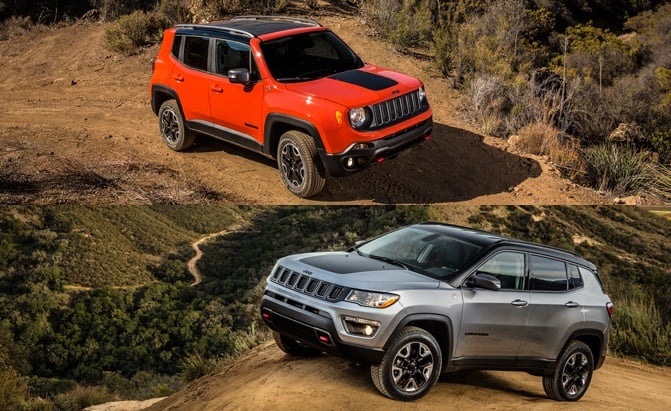









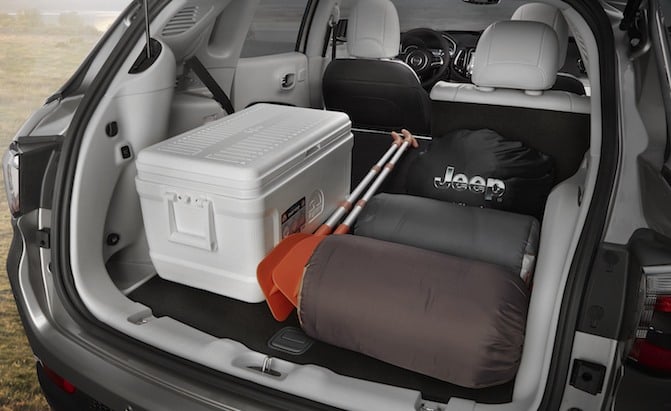
















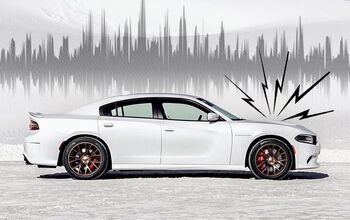


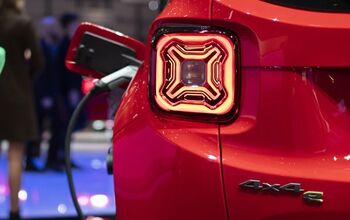
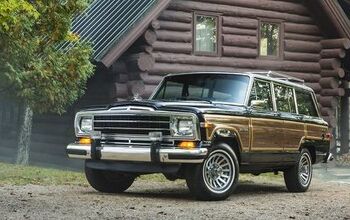

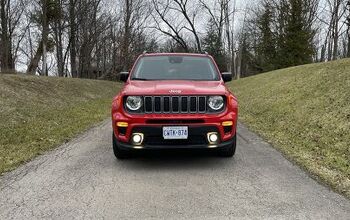
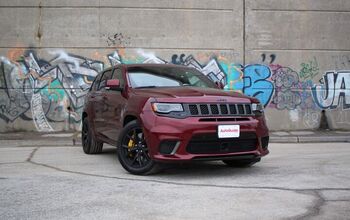










Comments
Join the conversation
i own a 2019 renegade trailhawk its very capable on and off the road i have driven the compass trailhawk but think the renegade trailhawk is better
I traded my 2017 Renegade for a 2020 Compass this weekend. The write up here is pretty good, but the funny part is, the pictures in the photos are almost the exact two versions I had, colors and all! Only difference, both of mine were Latitudes, and here the orange Renegade is a Trailhawk. But both with the blacked out roof. Kind of fun to see them both compared.